Kak'ik: A Fiery Guatemalan Treasure Steeped in Mayan History
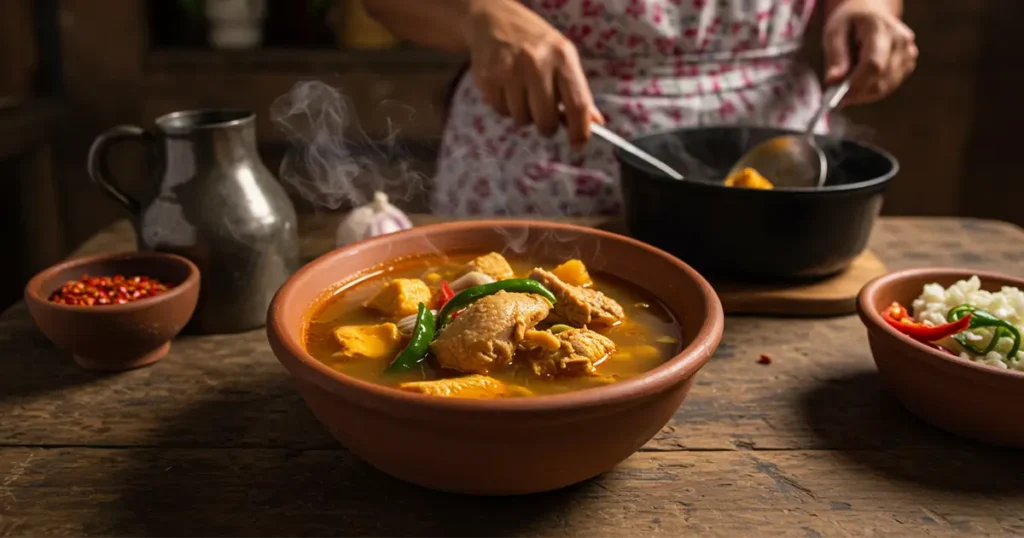
Guatemala, a land of vibrant culture, breathtaking landscapes, and ancient traditions, boasts a culinary heritage as rich and diverse as its history. Among its most treasured dishes stands Kak'ik, a soul-warming and intensely flavorful turkey soup that offers a delicious window into the country's Mayan past.
This iconic kakik guatemala dish is more than just a meal; it's a cultural emblem, a testament to centuries of tradition, and a culinary experience that ignites the senses. Its distinctive deep red hue and robust, spicy flavor profile make it an unforgettable highlight of Guatemalan cuisine.
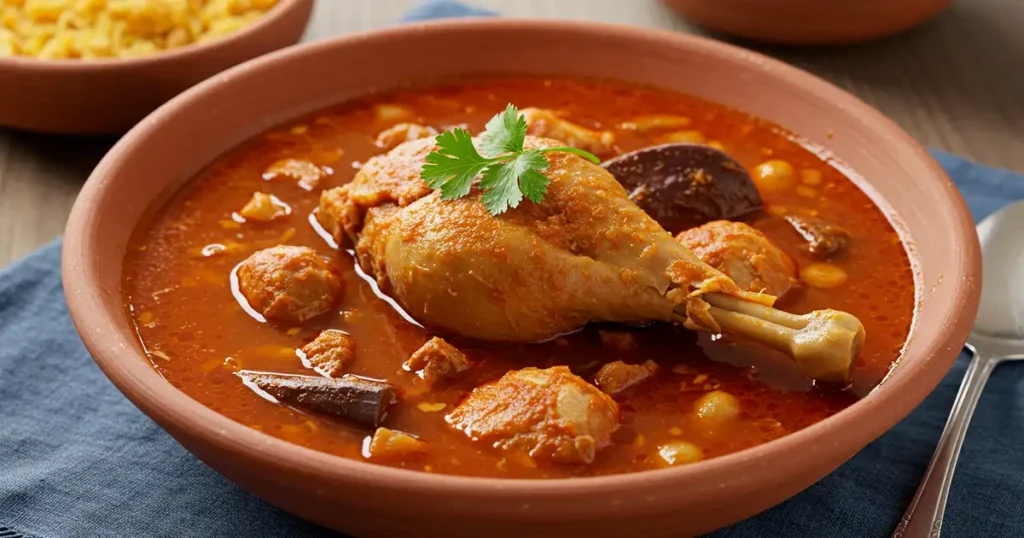
The Rich History of Kak-ik
The story of Kak'ik is deeply interwoven with the history of the Mayan civilization, one of the most sophisticated and enigmatic cultures of the ancient world. Long before the arrival of Europeans, the Maya had established a complex society with advanced knowledge of agriculture, astronomy, and, of course, gastronomy. Turkey, or pavo as it's known in Spanish, was a native bird of the Americas and held significant importance for the Maya, not just as a food source but also in ceremonial practices.
The origins of Kak'ik can be traced back to pre-Columbian times, specifically to the Q'eqchi' Maya people who primarily inhabit the Verapaces region of Guatemala – Alta Verapaz and Baja Verapaz. These lush, mountainous areas provided the ideal habitat for wild turkeys and the array of chiles and spices that form the heart of this iconic soup.
Archaeological evidence and oral traditions suggest that dishes similar to Kak'ik were prepared for special occasions, rituals, and celebrations. The very name "Kak'ik" hints at its ancient roots and fiery character.
The deep red color of the soup, derived primarily from tomatoes, achiote (annatto), and various chiles, is said to hold symbolic meaning. As mentioned in some accounts, this vibrant hue is sometimes interpreted as representing the blood shed in ancient ritual ceremonies. While this interpretation adds a layer of historical depth, today Kak'ik is celebrated as a dish of life, community, and enduring cultural identity.
Over centuries, as Guatemala underwent significant social and cultural transformations, including the Spanish colonial period, Kak'ik managed to retain its essential character. While some ingredients and techniques may have subtly evolved, the core elements and the spirit of the dish have been passed down through generations, making "guatemala kakik" a true culinary heirloom. It stands as a proud reminder of the resilience of Mayan culture and its lasting contributions to Guatemalan national identity. In 2007, Kak'ik was even declared a part of Guatemala's Intangible Cultural Heritage, cementing its status as a national treasure.
What is the Meaning of Kak-ik?

The name Kak'ik itself offers a direct insight into the fundamental nature of this beloved Guatemalan soup. In the Q'eqchi' Mayan language, "kak" translates to "red," and "ik" means "spicy" or "chile." Therefore, Kak'ik literally means "red and spicy." This straightforward yet evocative name perfectly encapsulates the two most prominent characteristics of the dish: its striking, deep crimson color and its invigorating, piquant flavor profile derived from a careful blend of chiles.
The "red" aspect of Kak'ik comes from a combination of ingredients. Ripe tomatoes form a crucial part of the base, lending their color and a touch of acidity. Achiote, also known as annatto, is another key contributor to the soup's signature hue. The seeds of the achiote plant impart a rich, earthy flavor and a vibrant reddish-orange color that is iconic in many Latin American cuisines. Of course, some varieties of red chiles also contribute to the overall color.
The "spicy" element is, without a doubt, central to the Kak'ik experience. Guatemala is home to a wide array of chile peppers, and the specific types used in Kak'ik can vary by region and by family recipe. Commonly used chiles include chile cobanero (a smoky, potent chile from the Cobán region), chile pasilla, chile guaque, and sometimes chile seco. The level of spiciness can range from a mild warmth to a fiery kick, depending on the cook's preference and the types and quantities of chiles employed. This heat is not just about sensation; it’s about a depth of flavor that harmonizes with the other ingredients.
Beyond its literal translation, the meaning of Kak'ik extends into the cultural and symbolic realms. The "red" can be seen as a symbol of vitality, of the lifeblood of a culture that has endured for millennia. The "spicy" can represent the vibrant spirit, the passion, and the resilience of the Guatemalan people. Together, "red and spicy" paint a culinary picture of a dish that is both comforting and exciting, traditional yet timeless. Understanding the meaning of Kak'ik is to appreciate the directness and honesty of Mayan culinary expression, where the name itself tells you what to expect and celebrates the core flavors that define it.
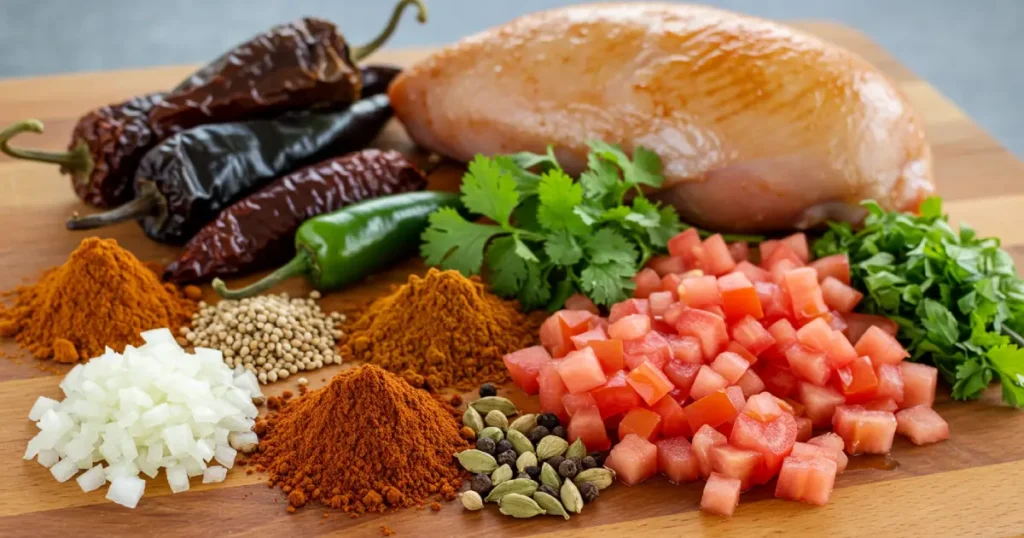
Unpacking the Flavors: Key Ingredients in Kak'ik
The magic of Kak'ik lies in its harmonious blend of relatively simple yet intensely flavorful ingredients. Each component plays a crucial role in creating the soup's distinctive taste, aroma, and texture. While regional and familial variations abound, a core set of ingredients defines this Guatemalan culinary masterpiece.
The Star: Turkey (Pavo)
Undeniably, the heart of Kak'ik is turkey. Traditionally, a whole turkey or large pieces of turkey on the bone are used. The bones are essential as they contribute significantly to the richness and depth of the broth during the long simmering process. The meat becomes incredibly tender, absorbing all the complex flavors of the surrounding soup. While chicken can be used as a substitute in some modern adaptations, authentic Kak'ik calls for turkey, which provides a leaner meat with a distinct flavor that is integral to the dish's traditional profile. The choice of turkey also connects the dish to its pre-Columbian roots, as turkeys were domesticated and consumed in Mesoamerica long before the arrival of other domesticated fowl.
The Fiery Base: Chiles
No Kak'ik would be complete without its signature spicy kick, derived from a careful selection of chiles. The specific types and quantities can vary greatly, influencing both the heat level and the flavor nuances of the soup. Some commonly used chiles in Kak'ik include:
- Chile Cobanero: Native to the Alta Verapaz region, particularly around Cobán, this small, red, and often smoked chile is renowned for its intense, lingering heat and distinctive smoky flavor. It's a prized ingredient in authentic Kak'ik.
- Chile Guaque (Guajillo): A dried red chile with a moderate heat level and a slightly sweet, fruity, and sometimes smoky flavor. It also contributes significantly to the soup's red color.
- Chile Pasilla: Another dried chile, long, dark, and wrinkled, offering a rich, complex flavor with notes of fruit and cocoa, and generally mild to moderate heat.
- Chile Seco: A more general term for dried chiles, this can encompass various types depending on the region.
- Samät (Culantro or Eryngium foetidum): While not a chile, this potent herb with a cilantro-like flavor (but much stronger) is often ground with the chiles and other spices to form the seasoning paste. It adds a unique, pungent aroma and taste.
These chiles are typically toasted and then rehydrated or ground into a paste that forms the flavor backbone of the soup.
The Vibrant Red: Tomatoes and Achiote
The beautiful, deep red color of Kak'ik comes primarily from ripe tomatoes and achiote (annatto seeds).
- Tomatoes: Fresh, ripe tomatoes are roasted or charred, then blended to create a rich, slightly tangy base for the soup. Their natural pigments contribute significantly to the red hue.
- Achiote (Annatto): These small, hard, reddish seeds from the achiote tree are used as a natural food coloring and flavoring agent. They impart a mild, earthy, slightly peppery flavor and a distinctive reddish-orange color. Achiote can be used as whole seeds steeped in the broth, or more commonly, as a paste or powder.
Aromatic Spices and Herbs
Beyond the primary flavors of turkey, chiles, tomatoes, and achiote, a symphony of other spices and herbs contributes to Kak'ik's complexity:
- Garlic and Onions: These aromatics form the foundation of many savory dishes, and Kak'ik is no exception. They are often roasted or charred alongside the tomatoes and chiles.
- Cilantro: Fresh cilantro leaves are often used as a garnish, adding a burst of freshness that contrasts beautifully with the rich, spicy broth. Sometimes, cilantro stems are also included in the simmering process.
- Hierbabuena (Mint): In some regional variations, particularly in Alta Verapaz, a sprig of hierbabuena is added towards the end of the cooking process or used as a garnish. It lends a subtle, refreshing coolness that complements the spiciness.
- Coriander Seeds, Cloves, Cinnamon, and Allspice: Depending on the specific recipe, small amounts of these warm spices might be toasted and ground with the chiles to add further depth and complexity to the flavor profile. The use of spices like cinnamon and cloves might reflect some influence from Spanish colonial cuisine, integrated over time into the traditional Mayan recipe.
The interplay of these ingredients, simmered slowly to allow their flavors to meld, results in the rich, aromatic, and invigorating soup that is Kak'ik.
How to Prepare Kak'ik de Pavo: A Culinary Journey
Preparing Kak'ik de Pavo is a labor of love, a process that involves several steps, each contributing to the final depth of flavor. While specific techniques can vary from one family or region to another, the general approach to creating this iconic "kakik guatemala dish" follows a common path, transforming simple ingredients into a culinary masterpiece.
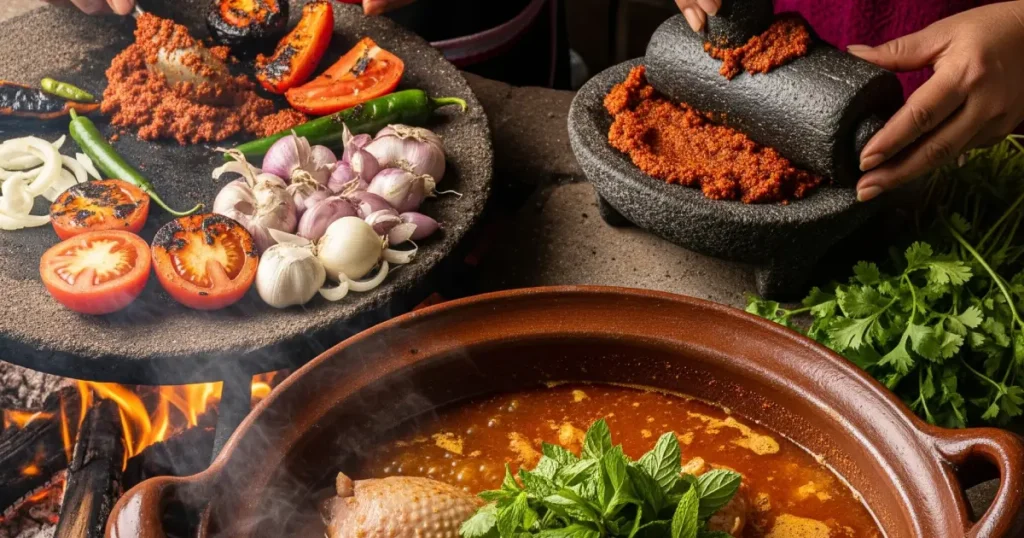
Traditional Preparation Methods
Historically, Kak'ik would have been cooked over an open fire, often in a large clay pot. This method would impart a subtle smokiness to the soup, enhancing its already complex flavor profile. The ingredients, such as tomatoes, chiles, garlic, and onions, were often charred directly on a "comal" (a flat griddle) before being ground by hand using a "piedra de moler" (grinding stone). This traditional method of charring and grinding releases the essential oils and deepens the flavors of the components.
The turkey itself would be carefully selected and butchered, with all parts, including bones, utilized to create a rich and nutritious broth. The simmering process would be long and slow, allowing the turkey to become fall-apart tender and the flavors of the spices and aromatics to fully infuse the soup.
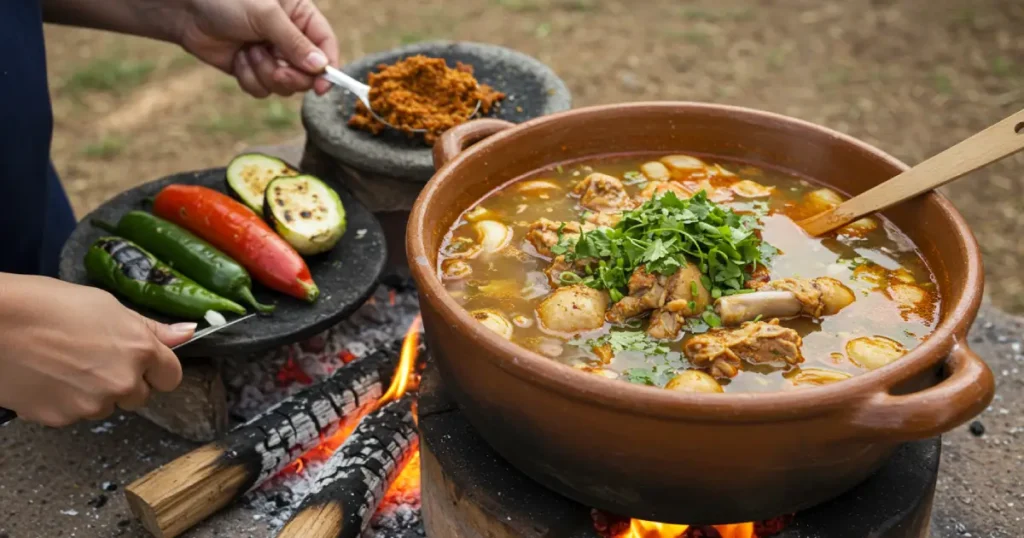
A Step-by-Step Guide (Generalized)
While an exact, universal recipe for Kak'ik is elusive due to its many variations, here's a generalized outline of how Kak'ik de Pavo is typically prepared:
- Prepare the Turkey: The turkey is cut into large serving pieces. It's often washed and sometimes rubbed with lime to clean it.
- Cook the Turkey: The turkey pieces are placed in a large stockpot with water, salt, and sometimes a few aromatics like onion or garlic, and simmered until the meat is tender and a flavorful broth is created. The turkey is then often removed from the broth temporarily.
- Prepare the "Recado" (Spice Paste/Sauce): This is the heart of Kak'ik's flavor.
- Roast/Char Vegetables: Tomatoes, tomatillos (in some variations), onions, and garlic are roasted or charred on a comal or under a broiler until their skins are blistered and they are softened. This adds a smoky depth.
- Toast and Rehydrate Chiles: Dried chiles (like Cobanero, Guaque, Pasilla) are lightly toasted to awaken their flavors, then de-stemmed, de-seeded (if a milder soup is desired), and rehydrated in hot water until softened.
- Grind/Blend: The roasted vegetables, rehydrated chiles, achiote (paste or powder), and other spices (such as samät/culantro, coriander seeds, cloves, etc., depending on the recipe) are ground together to form a smooth, thick paste or sauce. Traditionally, this was done on a grinding stone, but today a blender is commonly used.
- Combine and Simmer: The ground recado is then added to the turkey broth. The mixture is stirred well and brought to a simmer. The cooked turkey pieces are returned to the pot. The soup is then simmered for an extended period (often an hour or more) to allow all the flavors to meld and deepen. The consistency should be that of a hearty, slightly thickened soup. Salt is adjusted to taste.
- Add Final Herbs: Towards the end of the cooking process, fresh herbs like chopped cilantro or a sprig of hierbabuena (mint) might be added for a final burst of aroma and flavor.
Serving Suggestions and Accompaniments
Kak'ik is more than just a soup; it's a complete meal, typically served piping hot in generous bowls. Each serving usually includes a substantial piece of turkey. Common accompaniments and serving traditions include:
- Rice: A side of fluffy white rice is almost always served with Kak'ik. The rice can be eaten separately or added to the soup to soak up the delicious broth.
- Pochitos (Small Tamales): Small, plain tamales made from corn masa, often wrapped in "maxán" leaves or corn husks, are a traditional accompaniment. These are perfect for dipping into the rich, spicy broth.
- Tortillas: Fresh corn tortillas, warm and pliable, are also excellent for dipping and enjoying with the soup.
- Chopped Cilantro and Onions: Often offered on the side for diners to add to their liking, providing a fresh counterpoint to the richness of the soup.
- Lime Wedges: A squeeze of fresh lime juice can brighten the flavors just before eating.
- Extra Chile: For those who like it even spicier, a small dish of ground chile cobanero or a hot sauce might be provided.
The experience of eating Kak'ik is communal and celebratory, a true immersion into the flavors of Guatemala.
Regional Variations of Kak'ik in Guatemala
While Kak'ik is recognized as a national dish, its preparation is not monolithic across Guatemala. Like many traditional foods with deep historical roots, Kak'ik exhibits fascinating regional variations, particularly influenced by the local availability of ingredients and long-standing family traditions. The heart of Kak'ik country remains in the Verapaces region – Alta Verapaz and Baja Verapaz – where the Q'eqchi' Maya culture is most prominent.
Alta Verapaz (Cobán): This region is often considered the birthplace of the most "authentic" Kak'ik. Here, the use of chile cobanero, a potent and smoky chile native to this area, is a hallmark. The Kak'ik from Cobán is known for its intense, fiery flavor and deep red color. Samät (culantro) is also a key ingredient, lending its distinctive pungent aroma. Hierbabuena (mint) is sometimes added, providing a subtle cooling contrast to the heat. The consistency might be slightly thicker compared to versions from other regions.
Baja Verapaz: Neighboring Alta Verapaz, Baja Verapaz also has a strong tradition of Kak'ik. Recipes here share many similarities with those from Cobán, though there might be slight differences in the specific blend of chiles or the prominence of certain spices. The emphasis remains on a rich, spicy turkey soup.
Other Regions: While the Verapaces are the epicenter, Kak'ik is known and enjoyed in other parts of Guatemala as well. As the dish travels, local adaptations inevitably occur:
- Ingredient Swaps: Depending on what's readily available, the types of chiles might change. For instance, if chile cobanero is harder to find in a particular area, other dried red chiles like guaque or pasilla might be used more prominently, which can alter the heat level and flavor profile subtly.
- Spice Blends: The specific combination and proportion of aromatic spices (like cloves, cinnamon, allspice, or coriander seeds) can vary. Some families might have secret ingredients or techniques passed down through generations.
- Consistency: Some prefer their Kak'ik with a thicker, more stew-like consistency, while others might favor a slightly lighter broth.
- Accompaniments: While rice and pochitos are traditional, regional preferences for other side dishes might emerge.
It's important to note that even within the same town or village, recipes for Kak'ik can differ from one household to another. Each cook often adds their personal touch, making every pot of Kak'ik unique. This diversity is a testament to the living nature of culinary traditions.
The quest for "kakik guatemala" often leads travelers and food enthusiasts to the Verapaces to experience it in its most traditional setting. However, understanding these regional nuances adds another layer of appreciation for this complex and culturally significant dish. It highlights the adaptability of Guatemalan cuisine while underscoring the enduring core elements that make Kak'ik so distinctive.
Kak'ik: More Than Just a Soup – Its Cultural Significance Today
Kak'ik transcends its role as mere sustenance; it is a vibrant cultural symbol in Guatemala, deeply embedded in the social fabric and national identity. Its enduring presence in Guatemalan life speaks volumes about its importance beyond the dinner table. This "kakik guatemala dish" is a source of pride, a link to ancestral heritage, and a centerpiece for communal gatherings.
Kak'ik at Celebrations and Family Gatherings
Kak'ik is not typically an everyday meal for most Guatemalans due to the time and effort involved in its preparation and often the cost of turkey. Instead, it is a dish reserved for special occasions, celebrations, and significant family gatherings. These may include:
- Festivals and Patron Saint Days: Many towns and villages in Guatemala celebrate their local patron saints with festivals that often feature traditional foods, with Kak'ik being a prominent choice, especially in the Verapaz region.
- Weddings and Baptisms: Important life events like weddings and baptisms are often marked by feasting, and serving Kak'ik signifies hospitality and the importance of the occasion.
- Family Reunions: When families come together, especially during holidays or for large gatherings, preparing a large pot of Kak'ik is a way to honor tradition and share a beloved meal.
- Welcoming Honored Guests: Offering Kak'ik to a visitor is a gesture of respect and warm hospitality, showcasing one of the best of Guatemalan culinary traditions.
The communal act of preparing and sharing Kak'ik strengthens social bonds. The process often involves multiple family members, each taking on different tasks, from preparing the turkey and vegetables to grinding the spices and tending the simmering pot. This collaborative effort culminates in a shared meal that nourishes both body and spirit.
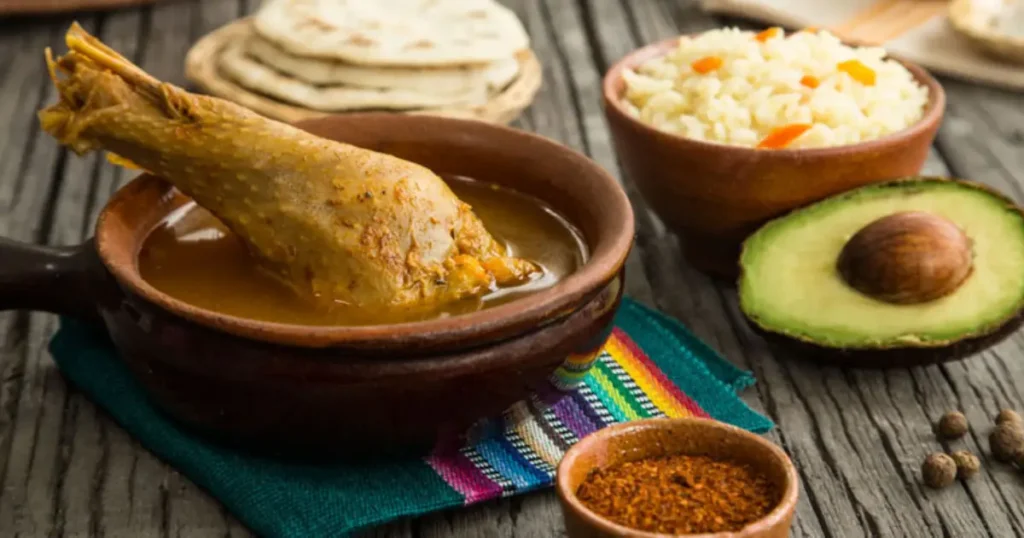
Kak'ik as a National Treasure
The cultural significance of Kak'ik was formally recognized on November 26, 2007, when the Guatemalan Ministry of Culture and Sports declared it, along with three other dishes (Jocón, Pepián, and Plátanos en Mole), as part of the nation's Intangible Cultural Heritage. This declaration aimed to protect and promote these iconic dishes as vital components of Guatemala's rich cultural identity.
This official recognition underscores several important aspects:
- Preservation of Tradition: It highlights the importance of preserving the traditional methods of preparing Kak'ik and passing down the knowledge to future generations.
- Mayan Heritage: It acknowledges the dish's deep roots in Mayan culture and celebrates the enduring contributions of indigenous communities to Guatemalan gastronomy.
- National Identity: Kak'ik has become a symbol of Guatemalan culinary pride, representing the country on the international gastronomic stage. It's a dish that Guatemalans, both at home and abroad, identify with and cherish.
- Culinary Tourism: The fame of Kak'ik also attracts tourists interested in experiencing authentic Guatemalan cuisine, thereby contributing to local economies, particularly in regions like Alta Verapaz where it is a specialty.
For many Guatemalans, the aroma and taste of Kak'ik evoke a sense of home, tradition, and belonging. It is a dish that tells a story of history, community, and the vibrant flavors of the land. The pride associated with "guatemala kakik" is palpable, and its continued celebration ensures that this fiery, ancestral soup will warm hearts and tables for generations to come.
The Enduring Legacy of Kak'ik
Kak'ik is far more than just a spicy turkey soup; it is a vibrant thread in the rich tapestry of Guatemalan culture. From its ancient Mayan origins, where its name red and spicy first described its essential character, to its revered status today as a national treasure and a highlight of "kakik guatemala" cuisine, this dish embodies history, community, and an explosion of flavor.
The careful preparation, the blend of traditional ingredients like turkey, native chiles, tomatoes, and achiote, and the communal joy of sharing it during special occasions all contribute to its profound cultural significance.
Understanding the history of Kak-ik, the meaning behind its name, and the intricacies of its preparation offers a deeper appreciation for the culinary heritage of Guatemala. It is a dish that invites you to experience the warmth of its broth and the spirit of its people.
Whether you are a seasoned traveler in Guatemala or an adventurous home cook, exploring Kak'ik is a journey into the heart of Mayan tradition and a taste of a truly unforgettable Guatemalan specialty. Its enduring legacy is a testament to the power of food to connect us to the past, celebrate the present, and nourish the future.

Leave a Reply